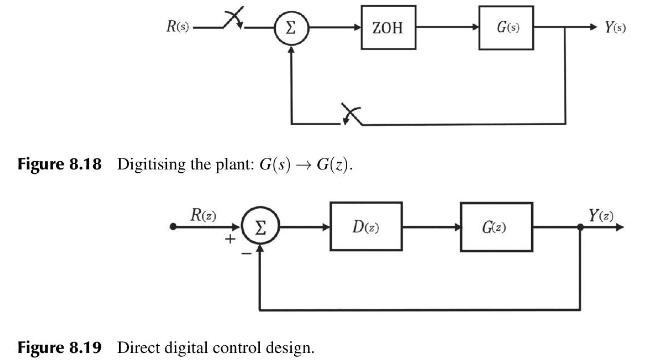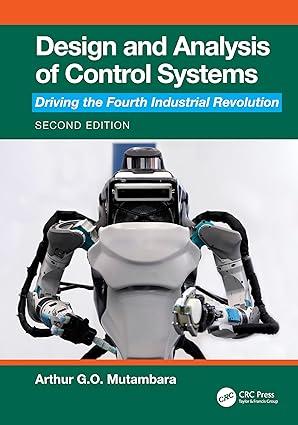In a robotic arm control system, the angle (theta(t)) represents the robotic arm orientation, (omega(t)) is the
Question:
In a robotic arm control system, the angle \(\theta(t)\) represents the robotic arm orientation, \(\omega(t)\) is the robot's angular speed, \(u(t)\) is the input force, and the output \(y(t)\) is the angle \(\theta(t)\). The robotic arm control model can be represented by the following equations:
\[\begin{aligned}\dot{\theta}(t) & =\omega(t) \\\dot{\omega}(t) & =u(t)\end{aligned}\]

(a) Show that the State-Space model for the system can be represented by \[
\begin{gathered}
A=\left[\begin{array}{ll}
0 & 1 \\
0 & 0 \end{array}ight] \\
B=\left[\begin{array}{l}
0 \\
1 \end{array}ight] \\
C=\left[\begin{array}{ll}
1 & 0 \end{array}ight] \\
D=[0]
\end{gathered}
\]
(b) Show that the plant Transfer Function model for the system is given by \[
G(s)=\frac{1}{s^{2}}
\]
(c) From the continuous State-Space model \((A, B, C, D)\) obtained in
(a) derive the digital StateSpace model \((F, G, H, J)\).
(d) From the results in (c), find the discrete plant Transfer Function \(G(z)\).
(e) Using the direct discrete design method, from the continuous plant transfer in (b), develop the discrete plant transfer function \(G(z)\). Is the \(G(z)\) in
(e) the same as that obtained in \((d)\) ?
(f) Explain the significance of the poles of the continuous and discrete Transfer Functions, \(G(s)\) and \(G(z)\).
(g) Show that the digital system is controllable and observable for all sample times \((T>0)\).
Step by Step Answer:

Design And Analysis Of Control Systems Driving The Fourth Industrial Revolution
ISBN: 9781032718804
2nd Edition
Authors: Arthur G O Mutambara





